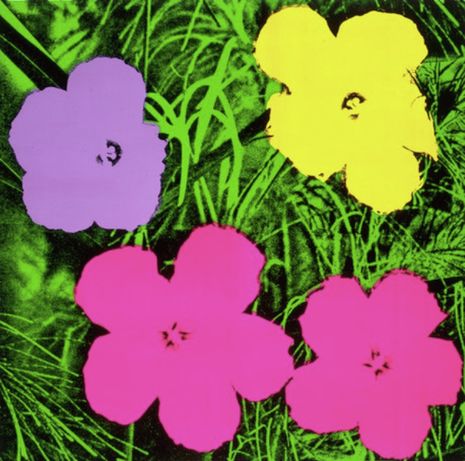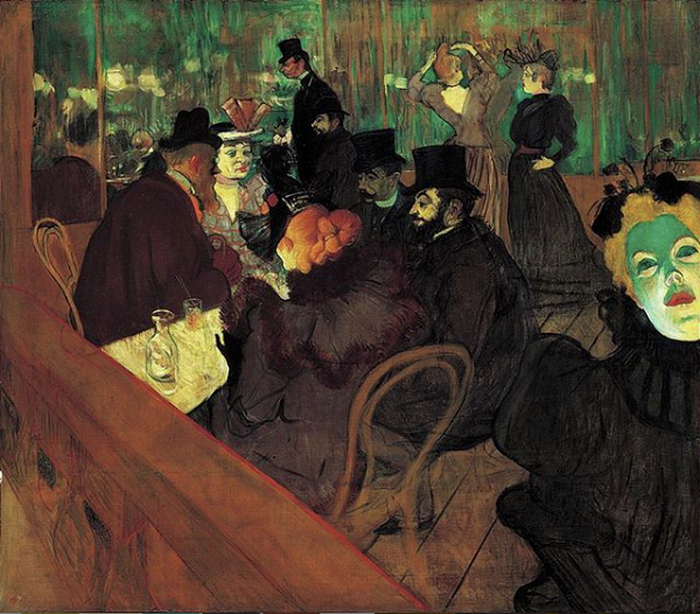The Art of Repetition
Angharad Williams considers how Warhol, Kusama and more have weaponised repetition
As a child I was sent a postcard with an Escher painting on the front, and I became fascinated by the repeated shapes and colours. This love of art which is made by duplicating a single image has stayed with me, and the widespread popularity of such pieces suggests I am far from alone. The arrival of lockdown has increased the repetitiveness of our everyday lives, but been met with considerably less enthusiasm. Why then does repetition in art of continue to interest us?
Perhaps the most famous example of repetition in art is Andy Warhol’s Campbell’s Soup Cans(1962). The bright colours and identical images blur the boundary between art and advertising, which was of course exactly what Warhol intended. The piece received criticism for its mundane subject and association with mass production, and yet achieved widespread popularity. The replication of the can reads most obviously as a comment on consumerism, although the exact nature of the comment remains unclear. The sheer number of cans though seems designed to overwhelm the viewer, eluding to the passivity of modern consumption in the process.
"The butterfly kaleidoscopes are not Hirst’s only use of repetition, or indeed his most famous - that title must go to his Spot paintings"
To see Warhol’s work as simply a critique of consumer culture though is somewhat misleading. In his Flowersseries (1964) Warhol moves away from using commercial goods as inspiration, and instead turns to the more traditional subject of flowers. Warhol though does not create images based on real flowers, but on a magazine photograph. Warhol’s magnification and colour distortion alters the flowers almost beyond recognition, and yet here his duplication takes on a softer tone. Rather than reducing the natural beauty of the flowers, the prints seem to amplify it as a means of appreciation.

Warhol is not alone in his use of repetition to magnify natural forms, Damien Hirst does the same in his collection of butterfly kaleidoscopes. Where Warhol uses colour, Hirst employs sheer volume to make his art - quite literally - larger than life. His use of real taxidermy specimens, arranged in intricate circles, simultaneously disgusts and enchants the viewer. The juxtaposition Hirst presents between life and death is stark. The two presented not as opposite, but rather interdependent. The seemingly endless insects serving as a celebration of life, albeit one which reminds us of how fleeting it is.
The butterfly kaleidoscopes are not Hirst’s only use of repetition, or indeed his most famous - that title must go to his Spot paintings. Each work in the collection consists of a grid of spots, evenly spaced and identical in size. The paintings are all named after chemical groups, and Hirst was inspired to make them by images of cells under a microscope. Their rigidity mimics the precision of science and rationality, art parred down to its component parts. Where the butterfly kaleidoscopes drew attention to life, a close examination of these leaves the viewer yearning for any sign of humanity.
If Hirst’s dots unsettle with their perfection, then the work of Yayoi Kusama seems to provide an antidote. Her pumpkin paintings too are primarily constructed of endlessly repeating dots, but shaped to take on familiar forms. Kusama has continued to create these paintings throughout her life, and for her they are not just art but a form of therapy. Her choice of pumpkins stems from specific childhood memories, however in her art they become something more universal. The forms have a distinctly human feel, echoing the shapes of the body, and turn repetition into a source of comfort.
The soothing impact of Kusama’s work can also be found in her sculptural installations. Most notable are her Infinity Rooms, which are walled with mirrors and filled with lights. These immersive pieces give the impression of a repetition which spans across universes. The viewer cannot help but feel insignificant in the face of this seemingly endless space. This though is made strangely welcome, as through insignificance the individual and the lights become a connected whole. Just as with the Pumpkin paintings, duplication for Kusama is a way of finding momentary peace.
There is no single use of repetition in art then, it has been used to achieve a variety of ends and effects, from the disturbing to the soothing. Perhaps though it is this disparity which connects repetition in art and repetition in life. In neither is meaning pre-determined, but rather remains for us to make, and thus continues to fascinate.
 News / SU reluctantly registers controversial women’s soc18 December 2025
News / SU reluctantly registers controversial women’s soc18 December 2025 Features / Should I stay or should I go? Cambridge students and alumni reflect on how their memories stay with them15 December 2025
Features / Should I stay or should I go? Cambridge students and alumni reflect on how their memories stay with them15 December 2025 News / Dons warn PM about Vet School closure16 December 2025
News / Dons warn PM about Vet School closure16 December 2025 News / Cambridge study finds students learn better with notes than AI13 December 2025
News / Cambridge study finds students learn better with notes than AI13 December 2025 News / CUP announces funding scheme for under-represented academics19 December 2025
News / CUP announces funding scheme for under-represented academics19 December 2025









